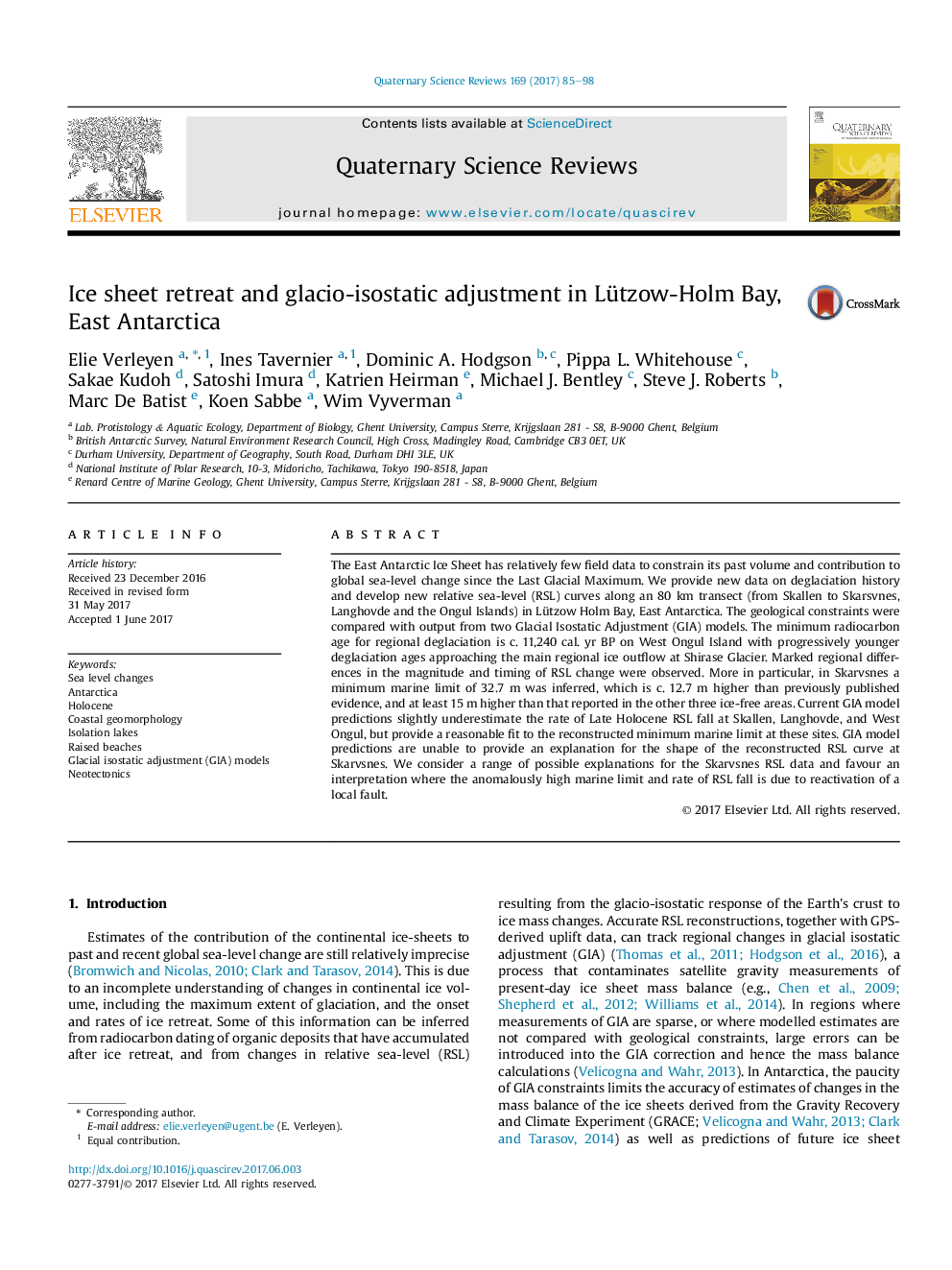| Article ID | Journal | Published Year | Pages | File Type |
|---|---|---|---|---|
| 5786644 | Quaternary Science Reviews | 2017 | 14 Pages |
Abstract
The East Antarctic Ice Sheet has relatively few field data to constrain its past volume and contribution to global sea-level change since the Last Glacial Maximum. We provide new data on deglaciation history and develop new relative sea-level (RSL) curves along an 80Â km transect (from Skallen to Skarsvnes, Langhovde and the Ongul Islands) in Lützow Holm Bay, East Antarctica. The geological constraints were compared with output from two Glacial Isostatic Adjustment (GIA) models. The minimum radiocarbon age for regional deglaciation is c. 11,240Â cal. yr BP on West Ongul Island with progressively younger deglaciation ages approaching the main regional ice outflow at Shirase Glacier. Marked regional differences in the magnitude and timing of RSL change were observed. More in particular, in Skarvsnes a minimum marine limit of 32.7Â m was inferred, which is c. 12.7Â m higher than previously published evidence, and at least 15Â m higher than that reported in the other three ice-free areas. Current GIA model predictions slightly underestimate the rate of Late Holocene RSL fall at Skallen, Langhovde, and West Ongul, but provide a reasonable fit to the reconstructed minimum marine limit at these sites. GIA model predictions are unable to provide an explanation for the shape of the reconstructed RSL curve at Skarvsnes. We consider a range of possible explanations for the Skarvsnes RSL data and favour an interpretation where the anomalously high marine limit and rate of RSL fall is due to reactivation of a local fault.
Related Topics
Physical Sciences and Engineering
Earth and Planetary Sciences
Geology
Authors
Elie Verleyen, Ines Tavernier, Dominic A. Hodgson, Pippa L. Whitehouse, Sakae Kudoh, Satoshi Imura, Katrien Heirman, Michael J. Bentley, Steve J. Roberts, Marc De Batist, Koen Sabbe, Wim Vyverman,
